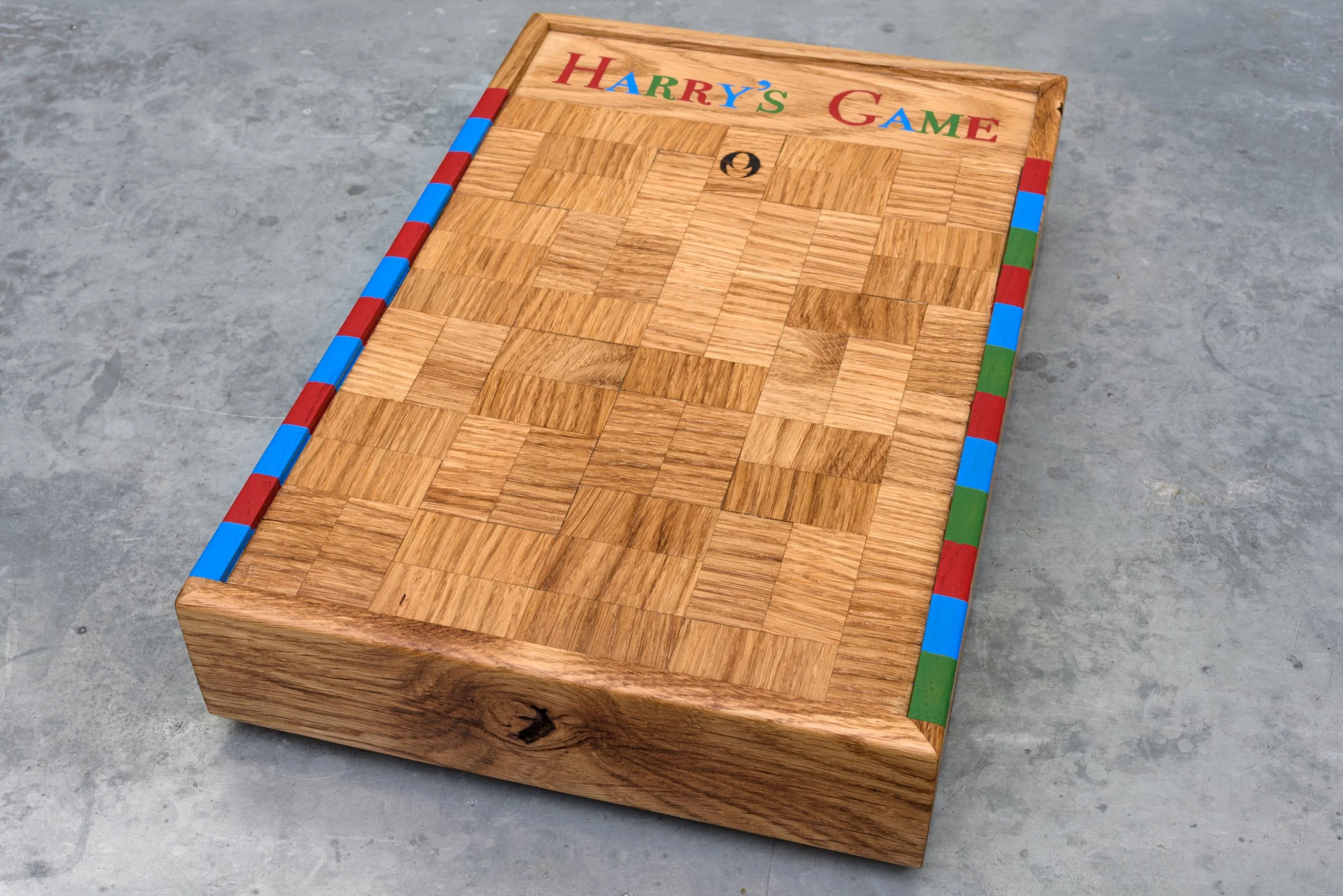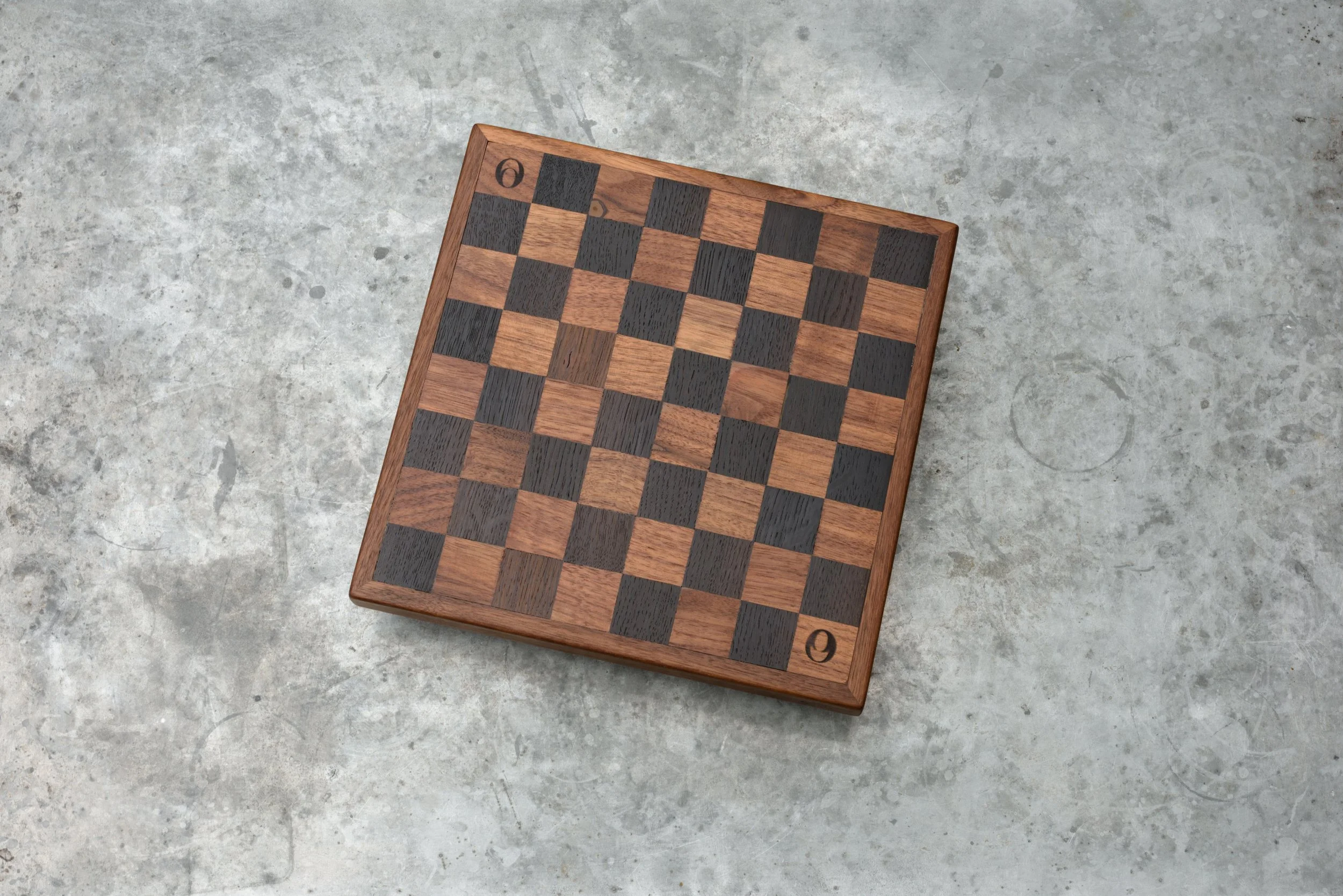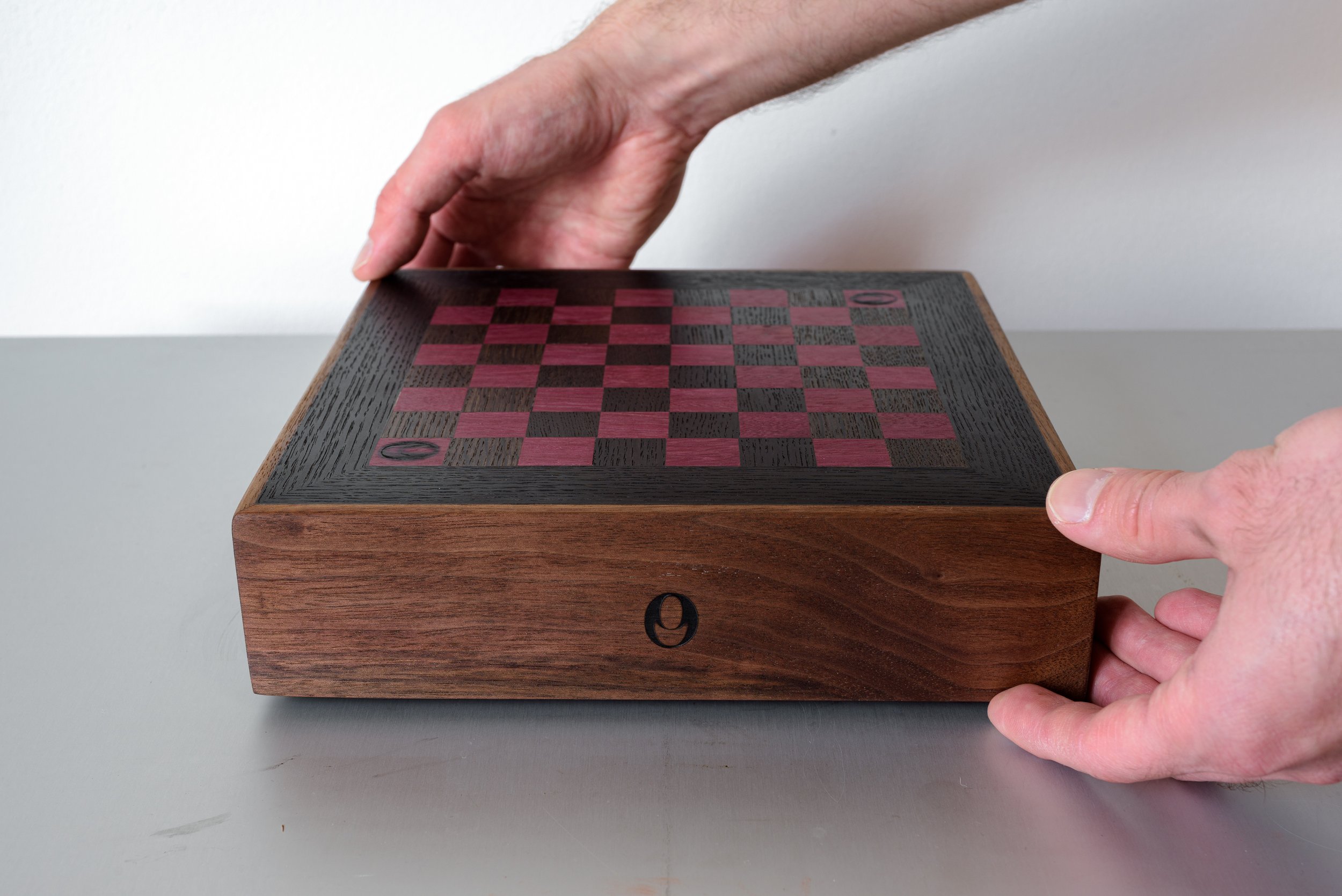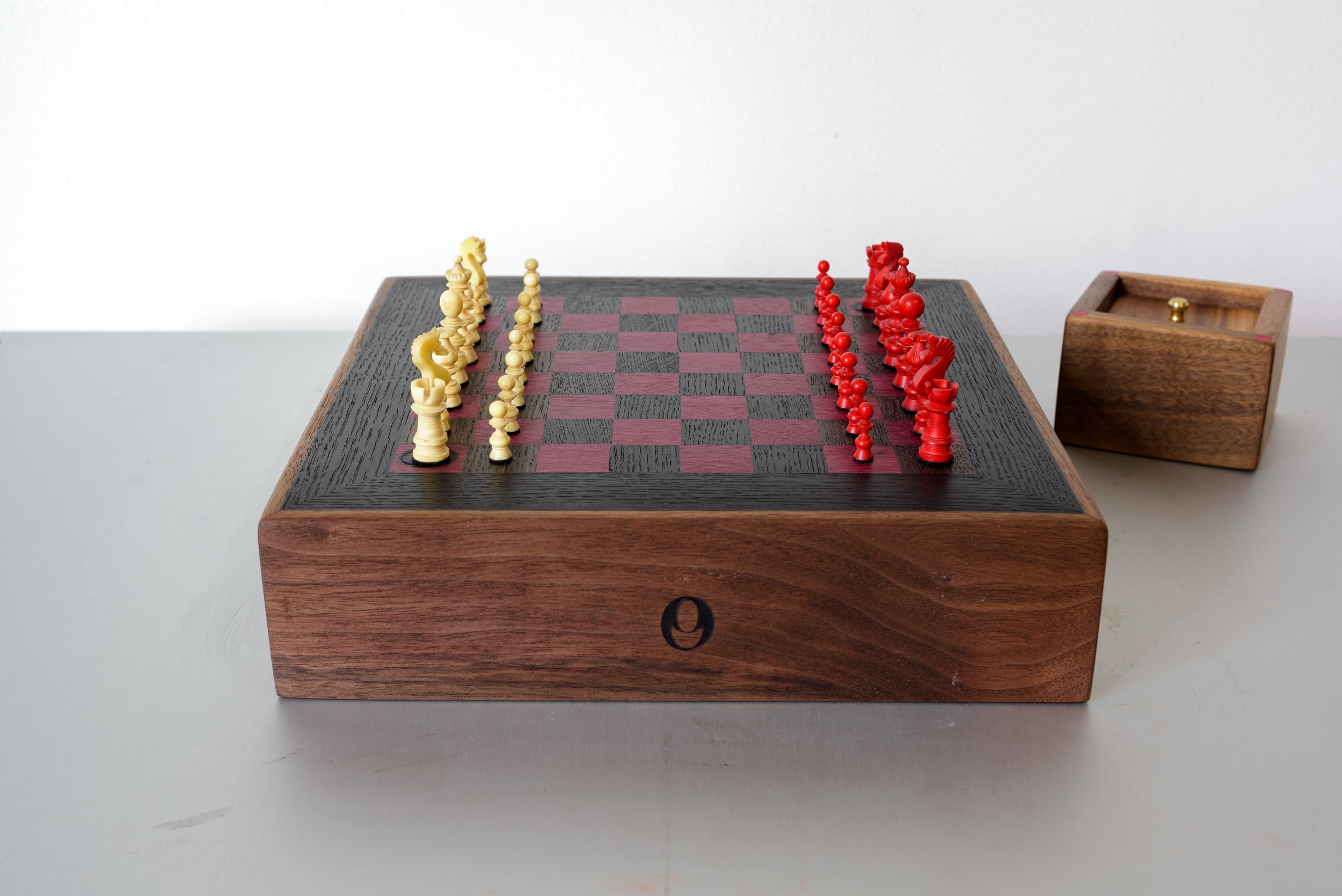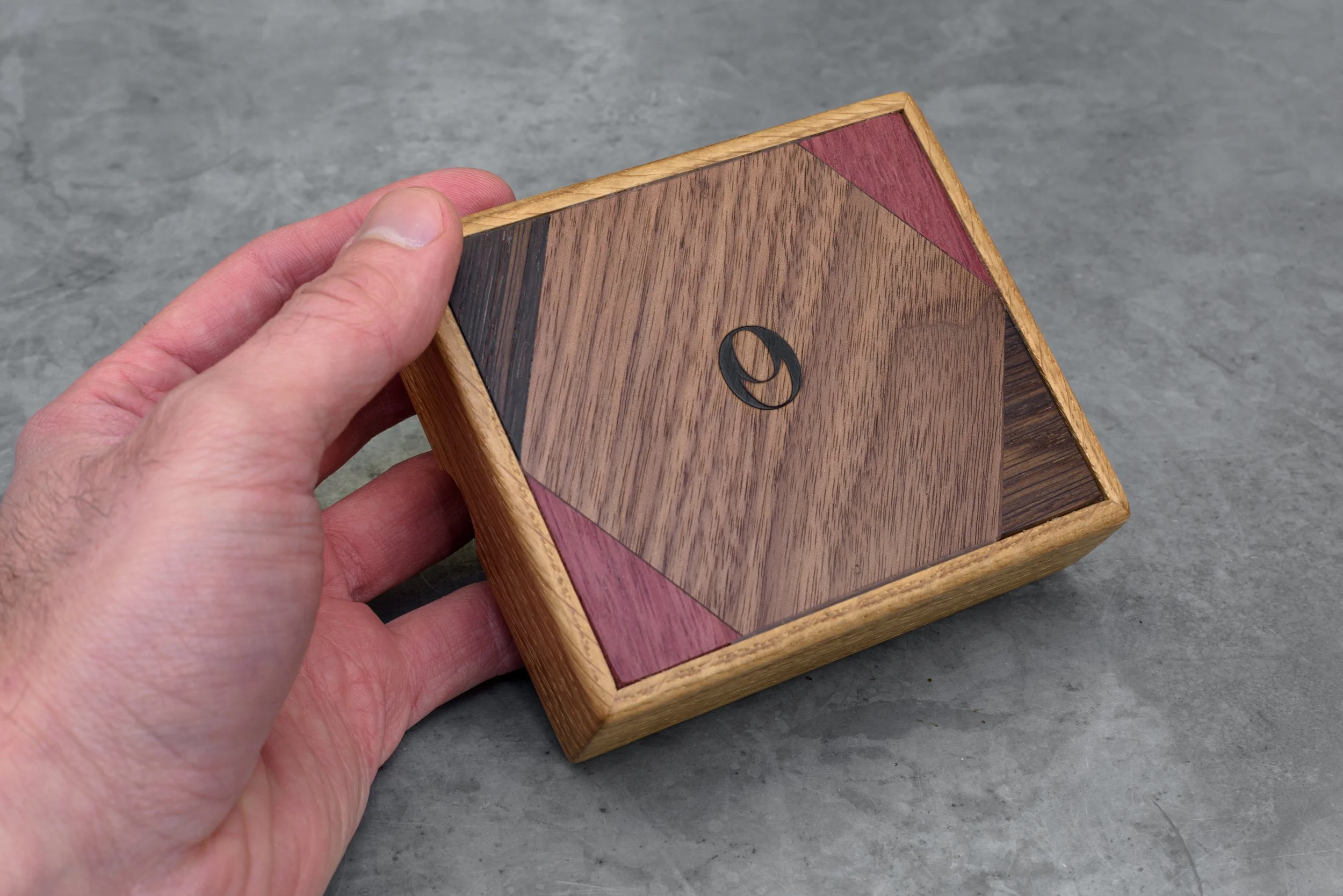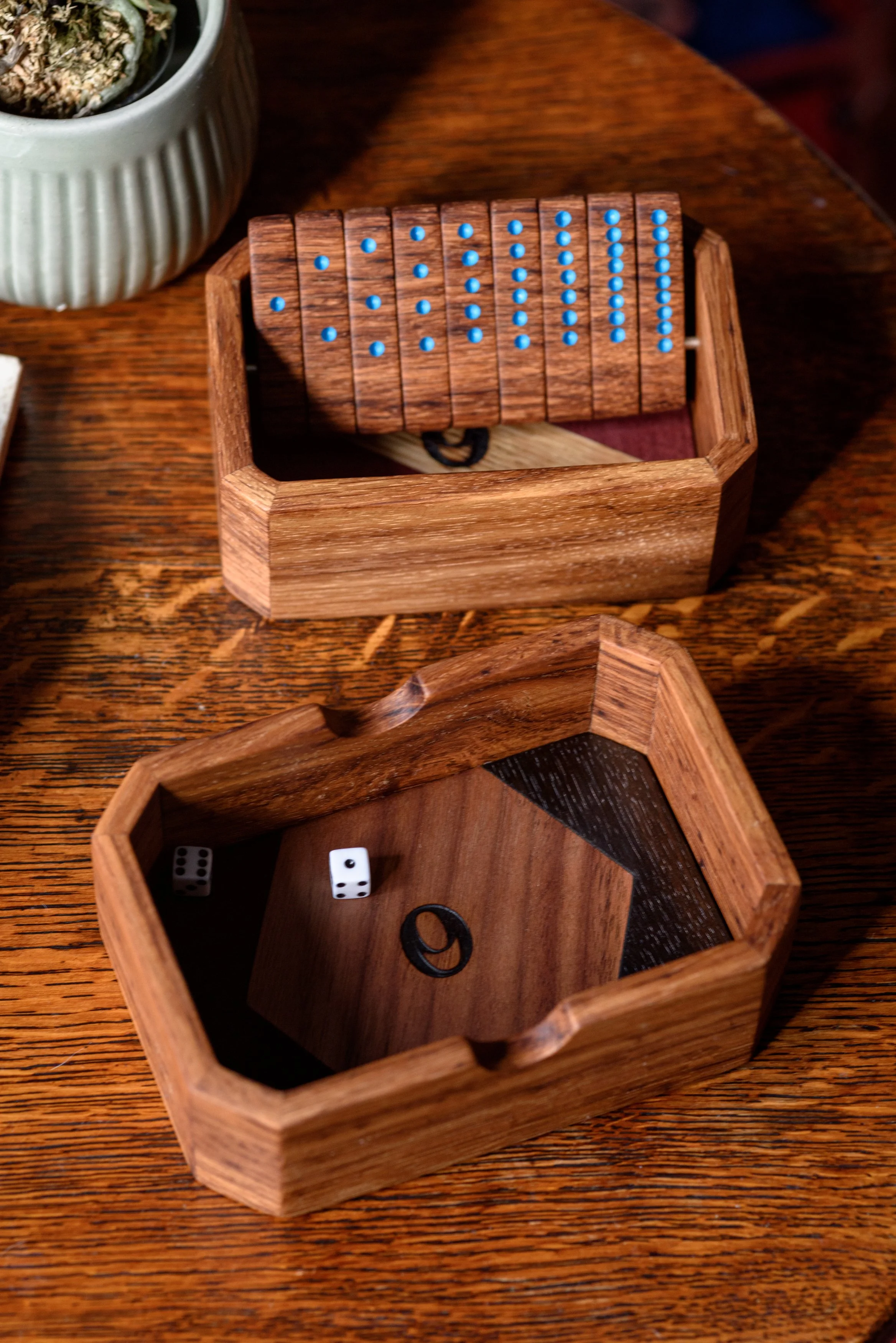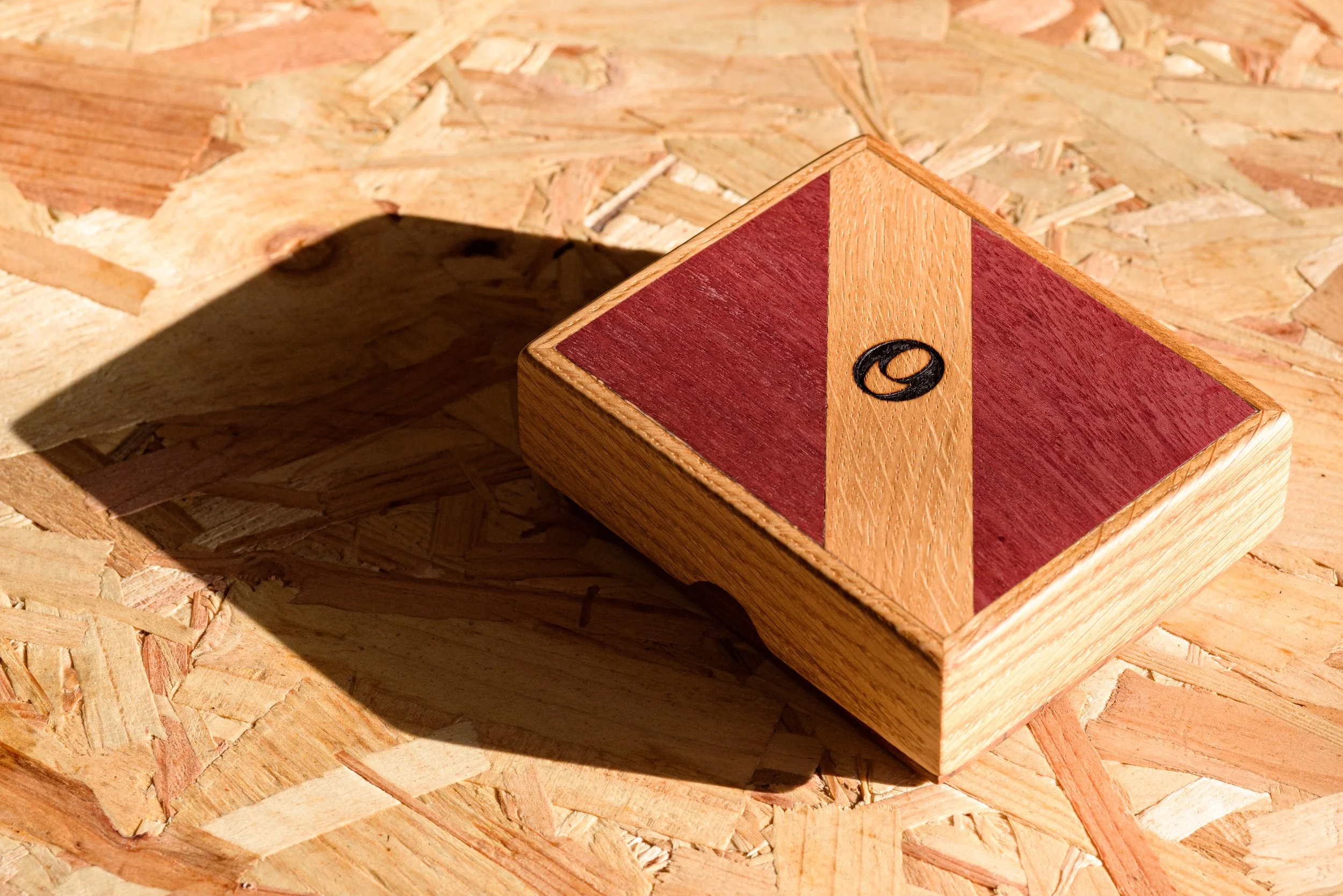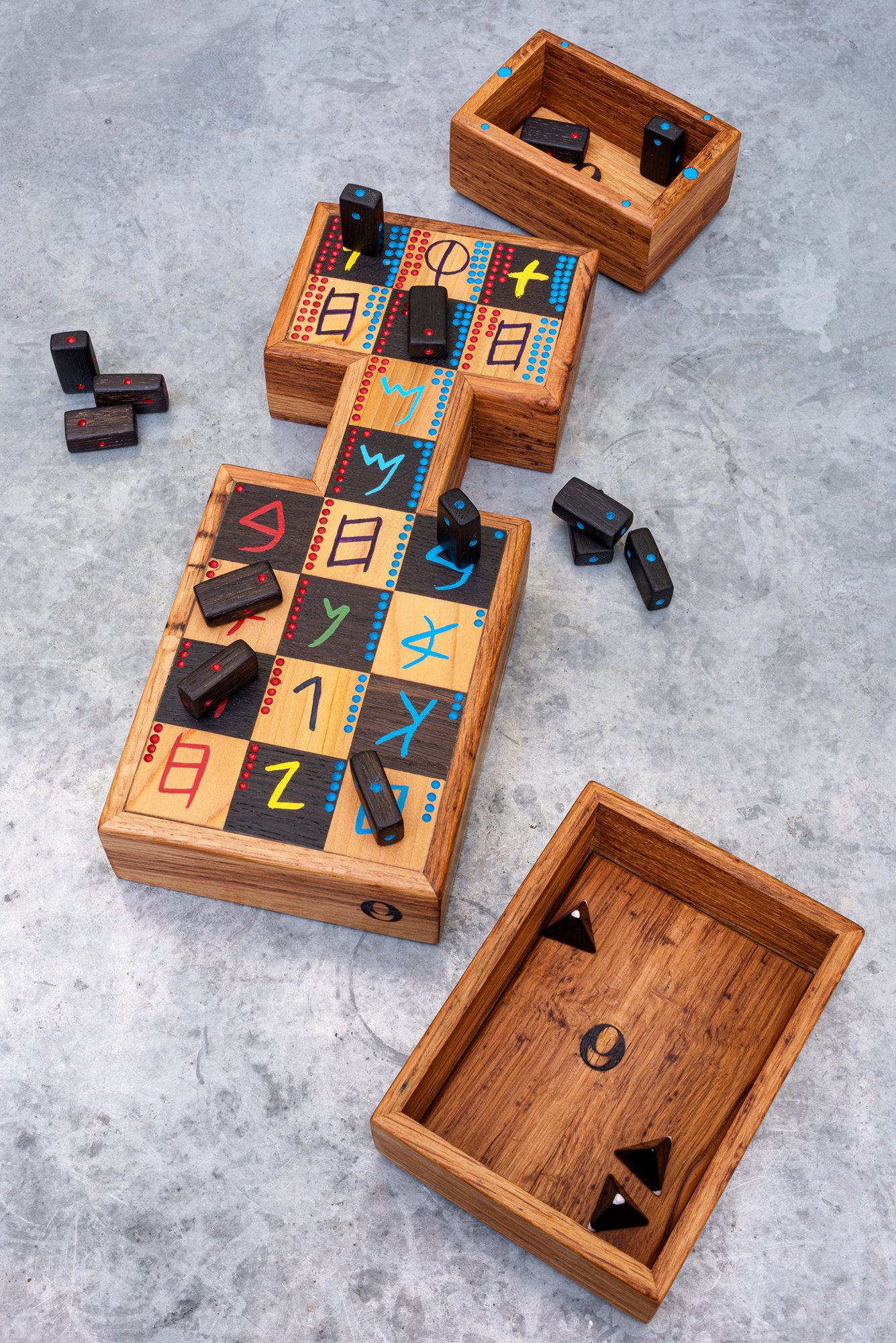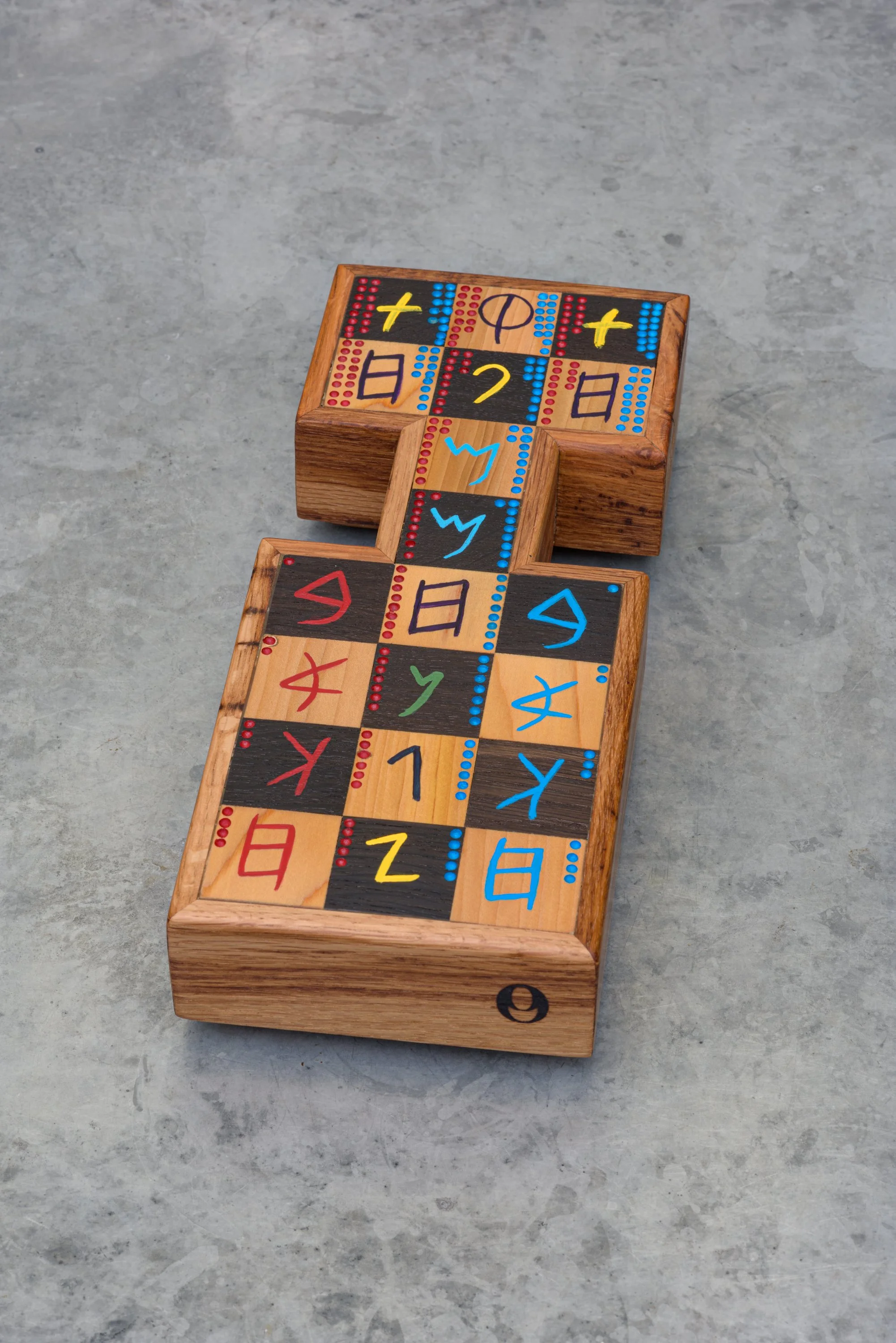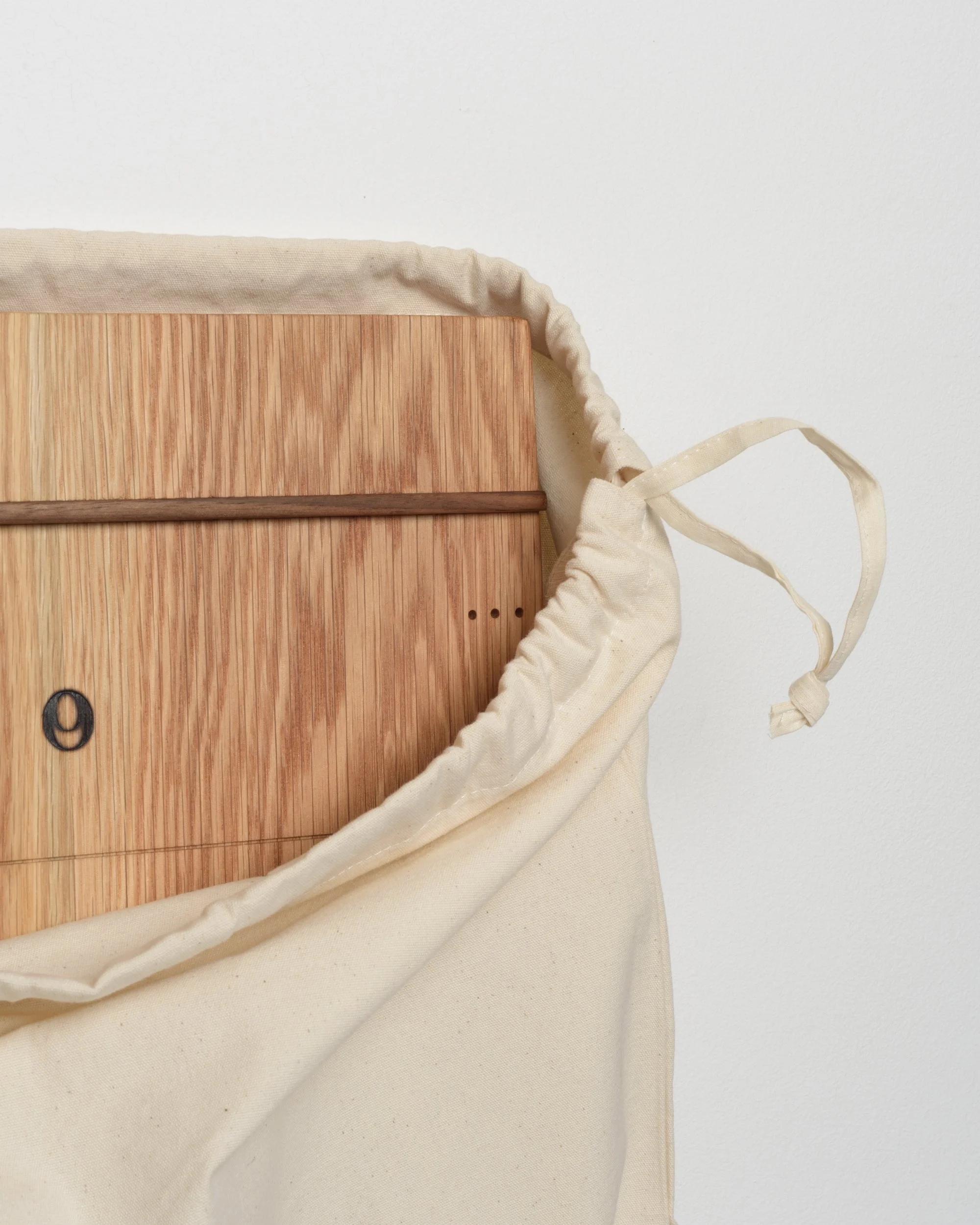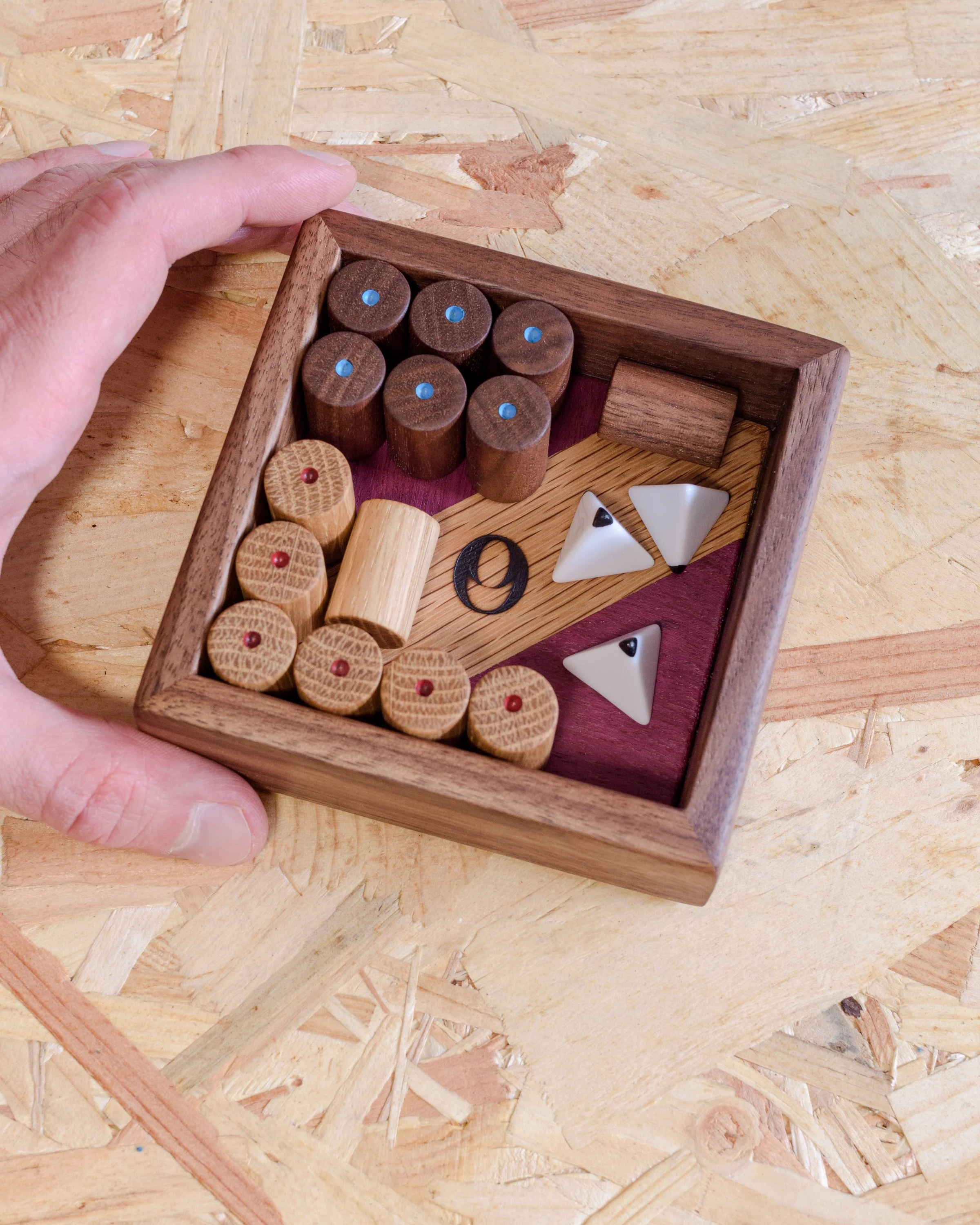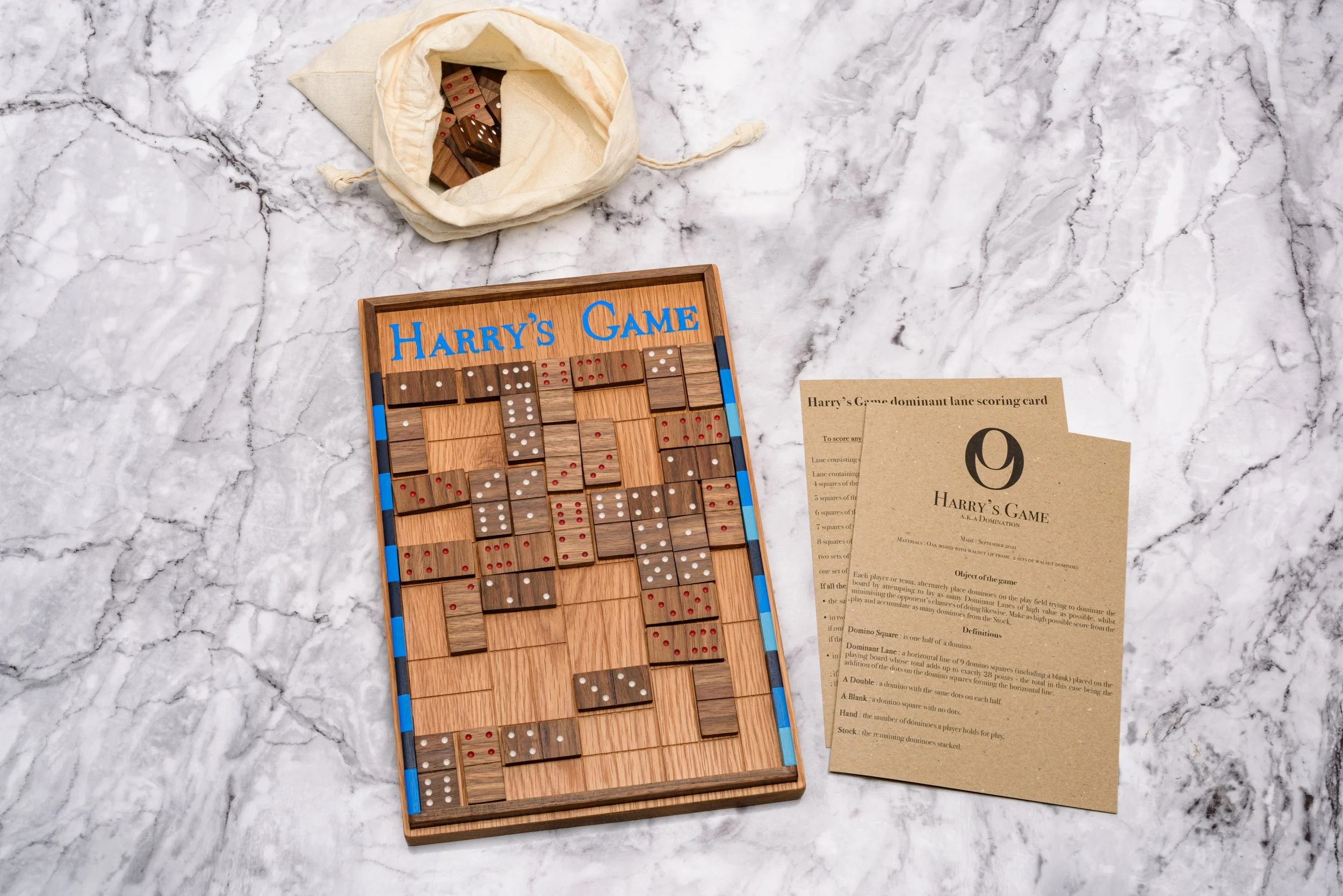Inspired by the rediscovery of my grandfather’s board game patent, Oakes & Oakes is an artisan concept project which began in October 2020. Having never had the pleasure of meeting Harry, my grandfather, the project began as an attempt to spark a connection and create a memory through the act of collaboration beyond the grave. The idea was simple, using Harry’s words and drawings contained in his patent as the guide, i would make his game out of natural solid woods.
I like the idea that as people play, the boards act as a bridge between the players creating connection and intimacy; a social past time that negates the digital realm. The ethos behind the Oakes & Oakes project is to celebrate games from all cultural heritages, preserve traditions and create new ones through bringing people together and ultimately creating heirlooms to be passed on to multiple generations.
Using responsibly sourced natural solid woods all the games are handcrafted and finished with traditional non-toxic natural oils and waxes.
As games get played and memories made, the players leave their marks further adding their own history.
The boards
-

Harry's Game
The Oakes & Oakes story begins with a young Harry Oakes. Eldest of 4 born and raised in Croydon, sold stockings door to door to pay for a degree in languages at London University, which took him to Spain not long before the second world war. Enlisted in the tank regiment he served in the Middle East, Crete and Athens, rising through the ranks to lieutenant-colonel.
After the war he continued to serve in various countries across the world as an education officer - here’s the thing about Harry: he was an avid bridge, chess, canasta and domino player and, what with all that travel and operational strategy, it isn’t surprising during this time he began to develop the board game which he called Domination…
Sadly, Harry passed away in 1970 before i could meet him, but his words and drawings contained in his patent for the game Domination were found by my father in 2015. So i’ve got the blueprints to realise the game and after various prototypes, a new look, a new name - Harry’s Game (nice idea dad!), the Oakes & Oakes project was launched in homage to Harry.
-
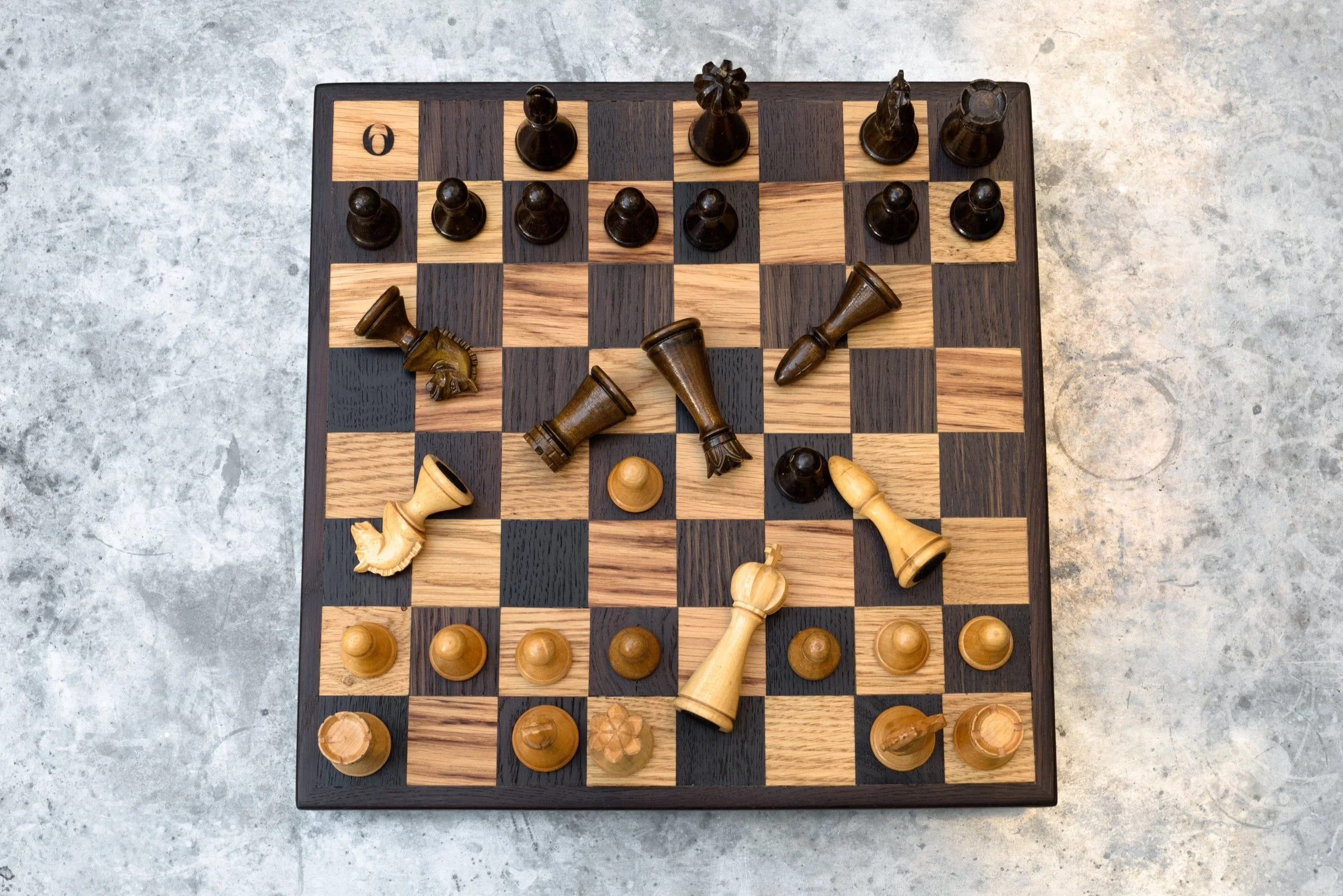
Chess
With its origins traced to Northern India circa 560A.D, a region at the time under rule by the Huns, this game has travelled the world through conquest and trade. The Persians, aiding in the destruction of the Huns, were deeply interested in Indian culture leading to the introduction to the game. 100 years later, the Arabs conquered Persia, absorbing the game quickly. Wherever Islam penetrated, so did Chess, from Spain to Zanzibar to Turkestan. In 1000A.D Christians on the Spanish March and in Italy began playing. By 1100A.D it was played widely across Bavaria, France & England. It’s history is fascinating and too long for all the details here…
“Checkmate” originates from the Persian shãh-mãt, translating to “the king is helpless”.
‘From my close contacts with artists and chess players, I have come to the conclusion that while all artists are not chess players, all chess players are artists.’
~ Marcel Duchamp
-

Royal Game of Ur
This game is proof of how far back humans have been engaging and creating games. The archeological discovery of a set unearthed in the ancient Sumerian city of Ur dates back to 2600-2400 BCE. Now on display at the British Museum. The game was popular across the Middle East as sets have been found in Iran, Syria, Egypt, Lebanon, Sri Lanka, Cyprus and Crete.
Rules have been hypothesised by H.J.R Murray, Robert Charles Bell & most recently or most famously by Irving Finkel. The boards found in Ur were accompanied by small round counters, each with five dots on them, seven light and seven dark. Also found were six pyramidal dice each with two dots on the two of the four corners.
Sometimes referred to as an early version of backgammon as players must guide their counters around the board whilst avoiding getting “eaten” along by the opponent. First one who gets all seven home wins the game.
-

Shut the Box
The origins of this game are a little hazy. Possibly Northern France, brought over to Britain in the 20th century. Popular amongst sailors and fishermen. Now often played in pubs. A great arithmetic work out which can be played solo or with any number of people.
Roll the dice and attempt to shut all the counters.
-

Shove Ha'Penny
A British pub game classic which at the height of its popularity the national competitions were televised on the Indoor League. Part of the shuffleboard family, this is played predominantly in the United Kingdom. Two players or teams compete against one another shoving coins or discs with any part of the hand up a tabletop board. The objective is to get coins to sit within each of the nine bays. Winning a game requires the players or teams to score an agreed amount in each of the nine bays.
-

The collection continues to grow...
I have an ambitious list which keeps growing. If you would like a custom board made get in touch through the contact page.
How to play Harry’s Game
The board that holds the history which created the foundations of the Oakes & Oakes ethos. Invented by Harry Oakes, once optioned by games manufacturer Waddingtons. A strategic mathematical game using dominos to create horizontal lines adding up to exactly 28.
A taste of how the game is played…
• Players : 2-3 (individual) or 4-6 (teams of 2)
• Set includes : Play field consisting of 54 rectangle markers for placing dominoes. 2 x sets of dominoes. Optional score board & 6 pegs for score marking.
A mathematical strategy game. Players or teams choose their coloured lanes, marked on left and right of the board. Two and four players on the left or three and six players on the right. Players take it in turns to place dominoes on the play field attempting to create dominant lines whilst stopping their opponents from doing the same. A dominant line is one adding up to exactly 28 pips. Each player begins play with 7 dominoes each. Players may only place a domino so long as one domino square is within their coloured lane. Points are awarded during play to a domino placed next to one of the same value. The game ends when one player or side has filled all their own spaces. Mega bonus points are awarded at the end of play to specific combinations of dominoes that make up a dominant line.


